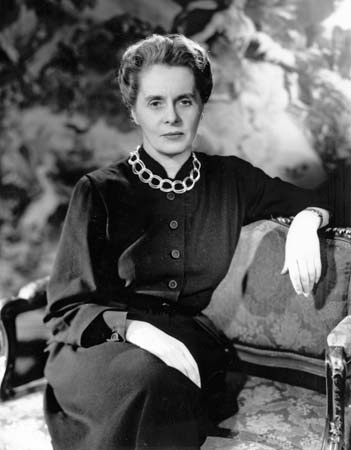de Valois, Dame Ninette
Irish dancer
original name Edris Stannus
born June 6, 1898, Blessington, County Wicklow, Ireland
died March 8, 2001, London, England
 Irish dancer, choreographer, and founder of the company that in October 1956 became the Royal Ballet. She was influential in establishing ballet in England.
Irish dancer, choreographer, and founder of the company that in October 1956 became the Royal Ballet. She was influential in establishing ballet in England.After study with Enrico Cecchetti and varied experience as a dancer in pantomime, revues, and opera, de Valois joined Sergey Diaghilev (Diaghilev, Sergey Pavlovich)'s Ballets Russes in 1923 as a soloist. At age 26, however, she quit performing after learning she was suffering from an undiagnosed case of childhood polio. In 1926 she founded her own school, the Academy of Choreographic Art, in London. She also produced dances for Lennox Robinson at the Abbey Theatre in Dublin and for Terence Gray at the Festival Theatre in Cambridge.
The success of her ballet Job for the Camargo Society in 1931, followed by her association with Lilian Baylis (Baylis, Lilian Mary), director of the Old Vic Theatre, led to the founding in 1931 of the Vic-Wells Ballet Company and the Sadler's Wells School. De Valois traced the history of the company, from its founding until it became the Royal Ballet in 1956, in Invitation to the Ballet (1937) and Come Dance with Me (1957). Besides directing the company that she created, she choreographed numerous ballets, including Checkmate (1937) and Don Quixote (1950). By drawing from English tradition for her choreographic material, as in The Rake's Progress (1935), inspired by William Hogarth's series of engravings, and The Prospect Before Us (1940), modeled on Thomas Rowlandson's caricature of the same name, she created a uniquely national ballet company. Her narrative ballets included prominent roles for male dancers, giving them artistic opportunities often neglected by other choreographers. In 1963 she retired as director of the Royal Ballet, although she remained head of the school until 1972. She was created a Dame of the British Empire in 1951 and was named Companion of Honour in 1980.